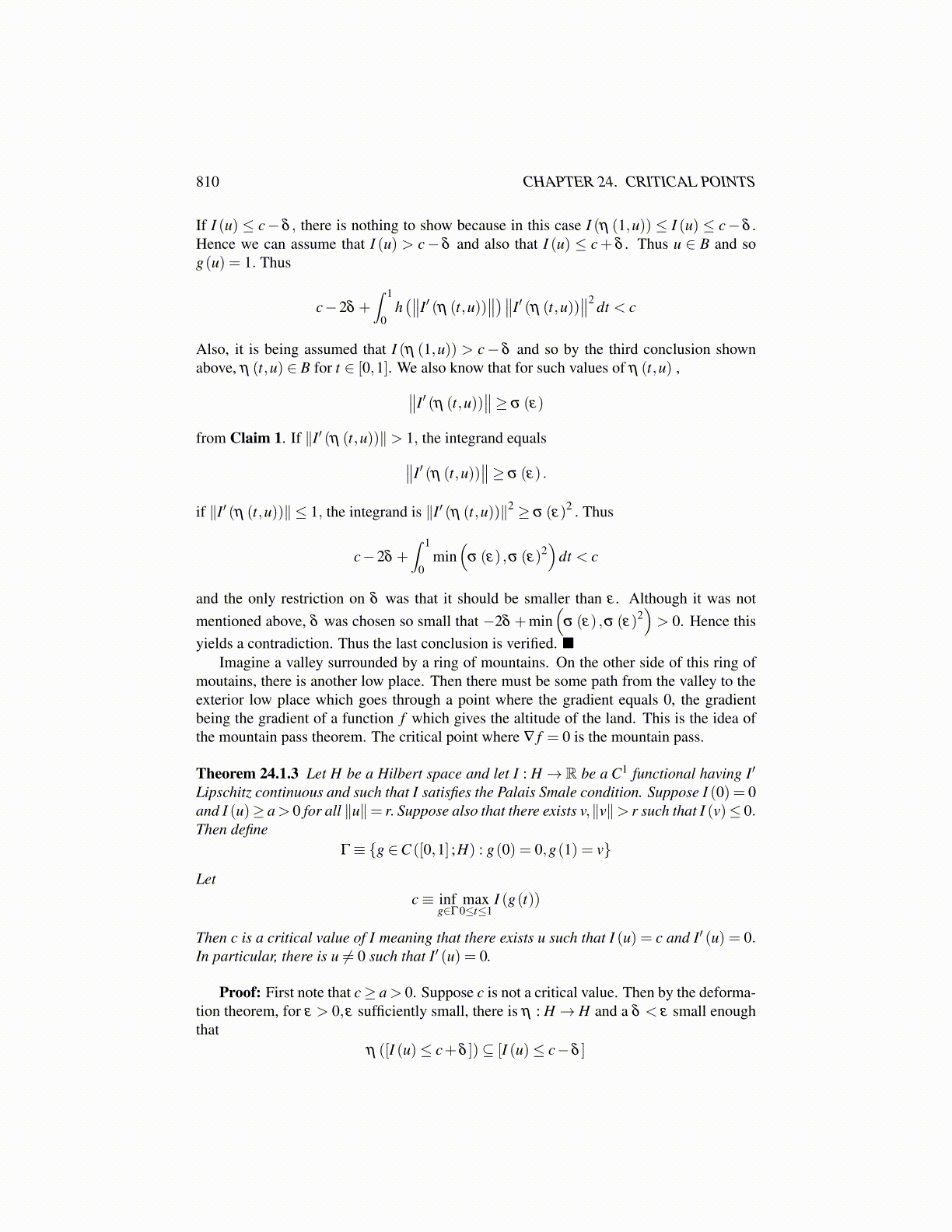
810 CHAPTER 24. CRITICAL POINTS
If I (u) ≤ c− δ , there is nothing to show because in this case I (η (1,u)) ≤ I (u) ≤ c− δ .Hence we can assume that I (u) > c− δ and also that I (u) ≤ c+ δ . Thus u ∈ B and sog(u) = 1. Thus
c−2δ +∫ 1
0h(∥∥I′ (η (t,u))
∥∥)∥∥I′ (η (t,u))∥∥2 dt < c
Also, it is being assumed that I (η (1,u)) > c− δ and so by the third conclusion shownabove, η (t,u) ∈ B for t ∈ [0,1]. We also know that for such values of η (t,u) ,∥∥I′ (η (t,u))
∥∥≥ σ (ε)
from Claim 1. If ∥I′ (η (t,u))∥> 1, the integrand equals∥∥I′ (η (t,u))∥∥≥ σ (ε) .
if ∥I′ (η (t,u))∥ ≤ 1, the integrand is ∥I′ (η (t,u))∥2 ≥ σ (ε)2 . Thus
c−2δ +∫ 1
0min
(σ (ε) ,σ (ε)2
)dt < c
and the only restriction on δ was that it should be smaller than ε . Although it was notmentioned above, δ was chosen so small that −2δ +min
(σ (ε) ,σ (ε)2
)> 0. Hence this
yields a contradiction. Thus the last conclusion is verified.Imagine a valley surrounded by a ring of mountains. On the other side of this ring of
moutains, there is another low place. Then there must be some path from the valley to theexterior low place which goes through a point where the gradient equals 0, the gradientbeing the gradient of a function f which gives the altitude of the land. This is the idea ofthe mountain pass theorem. The critical point where ∇ f = 0 is the mountain pass.
Theorem 24.1.3 Let H be a Hilbert space and let I : H → R be a C1 functional having I′
Lipschitz continuous and such that I satisfies the Palais Smale condition. Suppose I (0) = 0and I (u)≥ a> 0 for all ∥u∥= r. Suppose also that there exists v,∥v∥> r such that I (v)≤ 0.Then define
Γ≡ {g ∈C ([0,1] ;H) : g(0) = 0,g(1) = v}
Letc≡ inf
g∈Γmax
0≤t≤1I (g(t))
Then c is a critical value of I meaning that there exists u such that I (u) = c and I′ (u) = 0.In particular, there is u ̸= 0 such that I′ (u) = 0.
Proof: First note that c≥ a > 0. Suppose c is not a critical value. Then by the deforma-tion theorem, for ε > 0,ε sufficiently small, there is η : H→ H and a δ < ε small enoughthat
η ([I (u)≤ c+δ ])⊆ [I (u)≤ c−δ ]